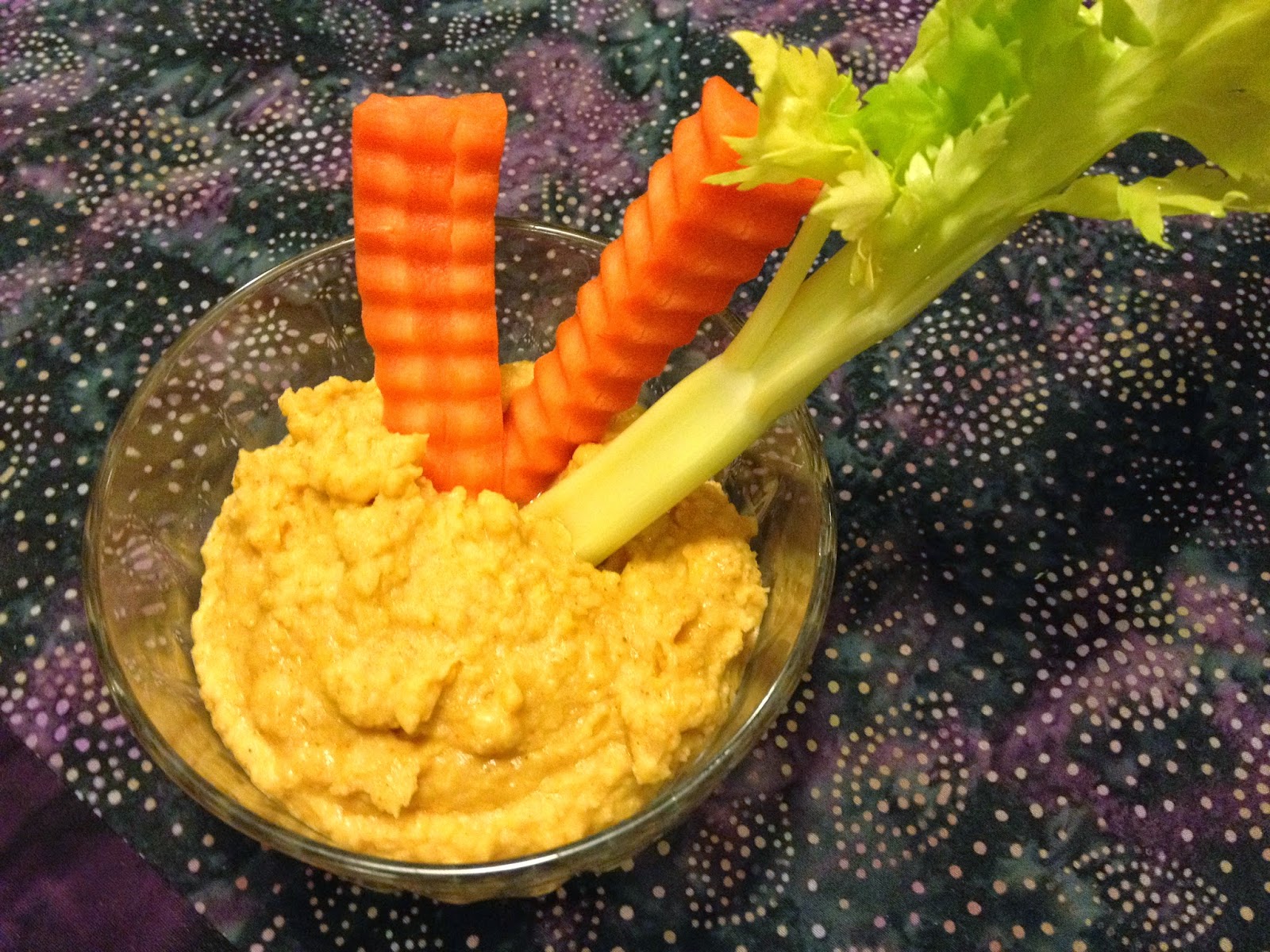 |
| Chickpeas pods from Teton County farm. |
 |
| Chickpea pods and a single chickpea. |
 |
| Homemade hummus, served with carrots and celery. |
.JPG) |
| Chickpeas from planting to 4-H presentation! |
For those who do not want to make their own hummus, it is
now available in many of our local grocery stores, as it is becoming more and
more common in the Montana culinary experience.
For those who crave an individually crafted recipe, see our blog for
recipes, photos and more information about the hummus among us!
Healthy Concessions
Healthy Concessions in Teton County
Munch Code -- Guide for Concessions -- Teton County
And the winner is ...
1 can garbanzo beans (chickpeas), drained and rinsed
3 Tbsp. olive oil
2 Tbsp. tahini
3 1/2 tsp. lemon juice
1/2 tsp. paprika
1/2 tsp. garlic salt
1/2 tsp. onion powder
1/2 tsp. curry powder
1/2 tsp. cayenne pepper
1/2 tsp. salt
In blender or food processor, blend ingredients to desired consistency.
Water
1 c. dried garbanzo beans/chickpeas
1/2 tsp. salt
1/2 c. olive oil
2 cloves garlic, minced
2 tsp. garlic powder
Soak dried garbanzo beans in water in a large bowl overnight. Drain and rinse. Add water and beans to a sauce pan and boil or simmer for a few hours until chickpeas are soft. Cool slightly. Add softened,cooled chickpeas to blender or food processor. Add olive oil and blend. If more olive oil is needed to blend, add more. Add garlic, garlic powder and salt. Blend until desired consistency. Be sure to serve with breath mints! It packs a garlic punch.
2 15 oz. cans chickpeas
1/3 c. tahini paste
8 roasted garlic cloves
1/8 c. lemon juice
1/2 Tbsp. extra virgin olive oil
1/4 tsp. cumin
Add garlic salt, white pepper and onion salt to taste
Drain liquid from both cans of chickpeas and reserve. Use later if needed to reduce thickness in blended product. Blend chickpeas and all other ingredients in a blender or food processor, pulsing for 60 seconds at a time. Process until desired consistency is reached. Transfer to serving bowl or platter. Garnish and serve with a drizzle of olive oil and paprika.
Other resources for your use and enjoyment:
Growing Chickpeas in the Northern Great PlainsHealthy Concessions
Healthy Concessions in Teton County
Munch Code -- Guide for Concessions -- Teton County
Recipes:
And the winner is ...
Tangy Southwest Hummus
1 can garbanzo beans (chickpeas), drained and rinsed
3 Tbsp. olive oil
2 Tbsp. tahini
3 1/2 tsp. lemon juice
1/2 tsp. paprika
1/2 tsp. garlic salt
1/2 tsp. onion powder
1/2 tsp. curry powder
1/2 tsp. cayenne pepper
1/2 tsp. salt
In blender or food processor, blend ingredients to desired consistency.
Hannah's Hummus
Water
1 c. dried garbanzo beans/chickpeas
1/2 tsp. salt
1/2 c. olive oil
2 cloves garlic, minced
2 tsp. garlic powder
Soak dried garbanzo beans in water in a large bowl overnight. Drain and rinse. Add water and beans to a sauce pan and boil or simmer for a few hours until chickpeas are soft. Cool slightly. Add softened,cooled chickpeas to blender or food processor. Add olive oil and blend. If more olive oil is needed to blend, add more. Add garlic, garlic powder and salt. Blend until desired consistency. Be sure to serve with breath mints! It packs a garlic punch.
Classic Hummus
2 15 oz. cans chickpeas
1/3 c. tahini paste
8 roasted garlic cloves
1/8 c. lemon juice
1/2 Tbsp. extra virgin olive oil
1/4 tsp. cumin
Add garlic salt, white pepper and onion salt to taste
Drain liquid from both cans of chickpeas and reserve. Use later if needed to reduce thickness in blended product. Blend chickpeas and all other ingredients in a blender or food processor, pulsing for 60 seconds at a time. Process until desired consistency is reached. Transfer to serving bowl or platter. Garnish and serve with a drizzle of olive oil and paprika.

No comments:
Post a Comment